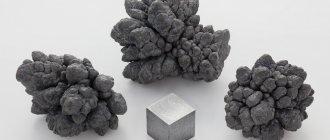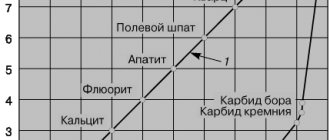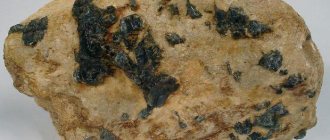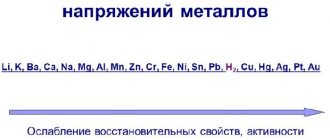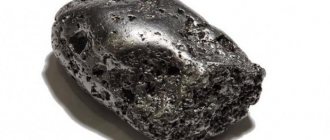What are amphoteric metals?
The list of amphoteric metals includes many items. Some of them can be confidently called amphoteric, some - presumably, others - conditionally. If we consider the issue on a large scale, then for brevity we can simply name the serial numbers of the above mentioned metals. These numbers are: 4.13, from 22 to 32, from 40 to 51, from 72 to 84, from 104 to 109. But there are metals that can be called basic. These include chromium, iron, aluminum and zinc. Strontium and beryllium complete the main group. The most common of all listed at the moment is aluminum. Its alloys have been used for many centuries in a wide variety of fields and applications. The metal has excellent anti-corrosion resistance and is easy to cast and various types of machining. In addition, the popularity of aluminum is complemented by such advantages as high thermal conductivity and good electrical conductivity.
Aluminum is an amphoteric metal that tends to exhibit chemical activity. The durability of this metal is determined by a strong oxide film and, under normal environmental conditions, during chemical reactions, aluminum acts as a reducing element. Such an amphoteric substance is capable of interacting with oxygen in the event of fragmentation of the metal into small particles. Such interaction requires the influence of high temperature conditions. A chemical reaction upon contact with an oxygen mass is accompanied by a huge release of thermal energy. At temperatures above 200 degrees, the interaction of reactions when combined with a substance such as sulfur forms aluminum sulfide. Amphoteric aluminum is not able to directly interact with hydrogen, and when this metal is mixed with other metal components, various alloys containing intermetallic compounds arise.
Iron is an amphoteric metal, which is one of the side subgroups of group 4 of the period in the system of elements of the chemical type. This element stands out as the most common component of the group of metallic substances in the components of the earth's crust. Iron is classified as a simple substance, among the distinctive properties of which are its malleability and silvery-white color. Such a metal has the ability to provoke an increased chemical reaction and quickly goes into the stage of corrosion when exposed to high temperatures. Iron placed in pure oxygen burns out completely, and when brought to a finely dispersed state it can spontaneously ignite in plain air. When exposed to air, a metallic substance quickly oxidizes due to excessive humidity, that is, it rusts. When burning in an oxygen mass, a kind of scale is formed, which is called iron oxide.
Production of products from tin and its alloys
Tin products have been in demand since ancient times. Children have been playing with tin soldiers for 4,000 years.
Educational: the museums of St. Petersburg contain large collections of tin soldiers.
- Electronics with their boards are now everywhere, and any contacts are connected with solder made of tin and its alloys. Tin coating is useful for copper wires; it provides protection against the effects of sulfur (it is part of the rubber insulation).
- Babbitt tin alloys have excellent anti-friction properties. None of the mechanisms (from a bicycle to the mighty KRAZ) can do without bearings.
- The metal is used in the typographic alloy garte. Printing production is impossible without tin alloys.
Molten Tin
The impact on the body of tin products is minimal. Therefore, the use of metal in the food industry is completely justified.
A simple tin can and the death of a polar expedition
French chef Francois Appert figured out how to store food for a long time. He proposed hermetically sealing food in tinplate jars (a thin sheet of iron coated with tin). Now we cannot imagine life without a jar of delicious canned food.
But the same tin cans (or rather, the “tin plague”) contributed to the death of R. Scott’s expedition to the South Pole. Fuel leaked from tanks sealed with tin solder. The metal went into alpha modification and simply crumbled in the cold.
Where are amphoteric metals used?
Chemical properties of alkaline earth metals.
list of alkaline earth metals Areas of application:
- Manufacturing of parts for seismic and speed sensors, clock mechanisms, torque.
- Production of parts for equipment that will interact with aggressive factors.
- Reinforcement of high pressure pipes.
- Shipbuilding, aircraft construction.
- Production of household appliances and tools. These include cutlery, tape measures, razor blades, and kitchen utensils.
- Assembly of video recording equipment.
Every year more and more chemical compounds appear. Thanks to this, new amphoteric metals are discovered. They are called materials of the future, but their popularity is growing slowly. This is due to the high cost and small size of finished products.
https://youtube.com/watch?v=BZIhw3pQFQs
Amphoteric metal bases
GOST 9012-59. metals. Brinell hardness measurement method (with changes n 1, 2, 3, 4, 5)
Under normal conditions, these substances do not dissolve in water and can easily be classified as weak electrolytes. Such substances are obtained after the reaction of metal salts and alkali. These reactions are quite dangerous for those who produce them and therefore, for example, to obtain zinc hydroxide, sodium hydroxide must be introduced slowly and carefully, drop by drop, into a container with zinc chloride.
At the same time, amphoteric - interact with acids as bases. That is, when a reaction is carried out between hydrochloric acid and zinc hydroxide, zinc chloride will appear. And when interacting with bases, they behave like acids.
We will devote this lesson to the study of amphoteric oxides and hydroxides. Here we will talk about substances that have amphoteric (dual) properties and the characteristics of the chemical reactions that occur with them. But first, let’s repeat what acidic and basic oxides react with. Next we will consider examples of amphoteric oxides and hydroxides.
Topic: Introduction
Lesson: Amphoteric oxides and hydroxides
Tin atom and molecule. Tin formula. Structure of the tin atom:
Tin (lat. Stannum) is a chemical element of the periodic system of chemical elements of D.I. Mendeleev with the designation Sn and atomic number 50. It is located in the 14th group (according to the old classification - the main subgroup of the fourth group), the fifth period of the periodic system.
Tin is an amphoteric metal. Belongs to the group of light, non-ferrous metals.
As a simple substance , tin under normal conditions is a malleable, soft, ductile, fusible, silvery-white, shiny metal ( white tin, β-tin ) or a gray powder ( gray tin, α-tin ).
The tin molecule is monoatomic.
The chemical formula of tin is Sn.
The electronic configuration of the tin atom is 1s2 2s2 2p6 3s2 3p6 3d10 4s2 4p6 4d10 5s2 5p2. The ionization potential (first electron) of the tin atom is 708.58 kJ/mol (7.343918(12) eV).
Structure of the tin atom. The tin atom consists of a positively charged nucleus (+50), around which 50 electrons move through five shells. In this case, 46 electrons are in the internal level, and 4 electrons are in the external level. Since tin is located in the fifth period, there are only five shells. First, the inner shell is represented by the s-orbital. The second - the inner shell is represented by s- and p-orbitals. The third and fourth - inner shells are represented by s-, p- and d-orbitals. The fifth - outer shell is represented by the s-orbital. At the outer energy level of the tin atom, there are two paired electrons in the 5s orbital, and two unpaired electrons in the 5p orbital. In turn, the nucleus of a tin atom consists of 50 protons and 69 neutrons. Tin belongs to the elements of the p-family.
The radius of the tin atom (calculated) is 145 pm.
The atomic mass tin atom is 118.710(7) a. eat.
Tin, atomic properties, chemical and physical properties
Amphoteric metal bases
Metals
Under normal conditions, these substances do not dissolve in water and can easily be classified as weak electrolytes. Such substances are obtained after the reaction of metal salts and alkali. These reactions are quite dangerous for those who produce them and therefore, for example, to obtain zinc hydroxide, sodium hydroxide must be introduced slowly and carefully, drop by drop, into a container with zinc chloride.
At the same time, amphoteric - interact with acids as bases. That is, when a reaction is carried out between hydrochloric acid and zinc hydroxide, zinc chloride will appear. And when interacting with bases, they behave like acids.
Rating: /5 — votes
Interaction of oxides with acids
Basic and amphoteric oxides react with acids. In this case, salts and water are formed:
FeO + H2SO4 = FeSO4 + H2O
Non-salt-forming oxides do not react with acids at all, and acidic oxides do not react with acids in most cases.
When does an acidic oxide react with an acid?
When solving the multiple-choice part of the Unified State Exam, you should conditionally assume that acidic oxides do not react with either acidic oxides or acids, except in the following cases:
1) silicon dioxide, being an acidic oxide, reacts with hydrofluoric acid, dissolving in it. In particular, thanks to this reaction, glass can be dissolved in hydrofluoric acid. In the case of excess HF, the reaction equation has the form:
SiO2 + 6HF = H2[SiF6] + 2H2O,
and in case of HF deficiency:
SiO2 + 4HF = SiF4 + 2H2O
2) SO2, being an acidic oxide, easily reacts with hydrosulfide acid H2S according to the type of coproportionation:
S+4O2 + 2H2S-2 = 3S + 2H2O
3) Phosphorus (III) oxide P2O3 can react with oxidizing acids, which include concentrated sulfuric acid and nitric acid of any concentration. In this case, the oxidation state of phosphorus increases from +3 to +5:
| P2O3 | + | 2H2SO4 | + | H2O | =to=> | 2SO2 | + | 2H3PO4 |
| (conc.) |
| 3P2O3 | + | 4HNO3 | + | 7H2O | =to=> | 4NO↑ | + | 6H3PO4 |
| (detailed) |
| P2O3 | + | 4HNO3 | + | H2O | =to=> | 2H3PO4 | + | 4NO2↑ |
| (conc.) |
4) Sulfur oxide (IV) SO2 can be oxidized with nitric acid taken in any concentration. In this case, the oxidation degree of sulfur increases from +4 to +6.
| 2HNO3 | + | SO2 | =to=> | H2SO4 | + | 2NO2↑ |
| (conc.) |
| 2HNO3 | + | 3SO2 | + | 2H2O | =to=> | 3H2SO4 | + | 2NO↑ |
| (detailed) |
Receipt
A common method for preparing amphoteric hydroxides is precipitation with dilute alkali from solutions of salts of the corresponding amphoteric element, for example:
ZnSO4 + 2NaOH ⟶ Zn(OH)2↓ + Na2SO4{\displaystyle {\mathsf {ZnSO_{4}\ +\ 2NaOH\ \longrightarrow \ Zn(OH)_{2}\downarrow \ +\ Na_{2}SO_{ 4}}}}
In excess of alkali, the hydroxide precipitate will begin to dissolve:
Zn(OH)2+2NaOH→Na2Zn(OH)4{\displaystyle {\mathsf {Zn(OH)_{2}+2NaOH\rightarrow Na_{2}}}}
In some cases, during precipitation, not a hydroxide is formed, but an oxide hydrate of the corresponding element (for example, hydrates of iron(III), chromium(III), tin(II), etc. oxides). The chemical properties of such hydrates are for the most part similar to those of the corresponding hydroxides.
Grounds. Amphoteric hydroxides
Bases, their classification, properties, preparation
| Bases are complex substances whose dissociation produces metal or ammonium ions and hydroxide ions OH-. NaOH <=> Na+ + OH- | Bases are substances that accept protons. NH3 + H+ = NH4+ |
1. Which of the following substances are bases: LiOH, CH3COOH, Fe(OH)2, CH3NH2, H2SO3, Mg(OH)2?
Classification of bases
| Signs of classification | Base groups | Examples |
| 1. Nature of substances | Inorganic | NaOH sodium hydroxide |
| Organic | CH3NH2 methylamine | |
| 2. Composition of substances (presence of oxygen) | Oxygen-free | NH3 -ammonia |
| Oxygen-containing | Cu(OH)2 - copper(II) hydroxide | |
| 3. Acidity of bases (based on the number of hydroxyl groups) | Mono-acid | KOH - potassium hydroxide |
| Diacid | Ca(OH)2 - calcium hydroxide | |
| 4. Degree of electrolytic dissociation | Weak | Fe(OH)2 - iron (II) hydroxide |
| Strong (alkalis) | NaOH sodium hydroxide | |
| 5. Solubility in water | Soluble (alkalis) | NaOH sodium hydroxide |
| Insoluble | Cu(OH)2 - copper(II) hydroxide | |
| 6. Volatility | Volatile | NH3 -ammonia |
| Non-volatile | Cu(OH)2 - copper(II) hydroxide | |
| 7. Heat resistance | Sustainable | KOH - potassium hydroxide |
| Unstable | Cu(OH)2 - copper(II) hydroxide |
2.
Characterize calcium hydroxide Ca(OH)2 according to all classification criteria.
RECEIVING
| Preparation of soluble bases (alkalis) | Preparation of insoluble bases |
| 1. Exchange reaction (if one of the products precipitates): Na2SO4 + Ba(OH)2 = BaSO4↓ + 2NaOH | Insoluble bases are obtained by an exchange reaction between a salt solution and an alkali solution: CuCl2 + 2NaOH = Cu(OH)2↓+ 2NaCl |
| 2. Soluble bases (alkalis) can be obtained by reacting an alkali and alkaline earth metal or their oxides with water: 2Na + 2H2O = 2NaOH + H2 CaO + H2O = Ca(OH)2 | |
| 3. Electrolysis of an aqueous solution of alkali metal chloride salts (chlorine is formed as a by-product): 2NaCl + 2H2O = 2NaOH + H2 + Cl2 (by electric current) |
3. Given substances: Fe(OH)2, Ca(OH)2, LiOH, Al(OH)3. Which substances are formed by the interaction of metals with water, and which by the action of an alkali on a salt solution?
Chemical properties of bases
1. Dissociation of bases with the formation of hydroxide ions OH-:
NaOH <=> Na+ + OH-LiOH <=> Li+ + OH-
2. Reaction with acids to form a salt (neutralization reaction):
Mg(OH)2 + 2HNO3 = Mg(NO3)2 + 2H2OMg(OH)2 + 2H+ = Mg2+ + 2H2O
3. Interaction of alkalis with acid oxides to form salt and water:
2NaOH + SiO2 = Na2SiO3 + H2O (when heated)Ca(OH)2 + CO2 = CaCO3↓ + H2O
4. The interaction of an alkali solution with solutions of various salts to form an insoluble base:
CuSO4 + 2NaOH = Cu(OH)2 ↓+ Na2SO4Cu2+ + 2OH- = Cu(OH)2 ↓
5. Decomposition of insoluble bases when heated to form metal oxide and water:
Cu(OH)2 = CuO + H2O (when heated)
6. Interaction of alkali solutions with some non-metals:
2NaOH + Cl2 = NaCl + NaClO + H2O (cold) 6NaOH + 3Cl2 = 5NaCl + NaClO3 + 3H2O (heated) 2NaOH + Si = Na2SiO3 + 2H2
- Interaction of alkali with some metals (forming amphoteric compounds).
??? 4. Given substances: CaO, SO2, Ba(OH)2, HClO4, KCl, CuCl2.
a) Which of the following substances react with sodium hydroxide?
b) Write equations for possible reactions.
c) Which of the following reactions is a neutralization reaction?
5. What substances decompose when heated: Fe(OH)2, NaOH, Al(OH)3, Fe(OH)3, Ba(OH)2? Write equations for possible reactions.
6. Three test tubes contain solutions of sodium chloride, hydrochloric acid, and sodium hydroxide. How can you recognize these solutions chemically?
7. What mass of alkali NaOH must be in solution to react with 16 g of copper (II) sulfate to obtain a precipitate of copper (II) hydroxide?
Amphoteric hydroxides
Amphoteric hydroxides are hydroxides that, upon dissociation, simultaneously form both H+ cations and OH- hydroxide ions. Amphoteric hydroxides correspond to amphoteric oxides. For example, Al(OH)3, Zn(OH)2, Cr(OH)3, Be(OH)2 and others.
1) Interaction of amphoteric hydroxides with acids:
Al(OH)3 + 3HCl = AlCl3 + 3H2O
Al(OH)3 + 3H+ = Al3+ + 3H2O
2) Interaction of amphoteric hydroxides with alkali:
Al(OH)3 + NaOH = Na[Al(OH)4] (sodium tetrahydroxoaluminate)Zn(OH)2 + 2NaOH = Na2[Zn(OH)4] (sodium tetrahydroxoaluminate)
3) They exhibit the properties of insoluble bases - they decompose when heated to form oxide and water:
2Al(OH)3 → Al2O3 + 3H2O
??? 8. a) Give examples of reactions that prove the properties of zinc hydroxide.
b) In which of the following reactions does zinc hydroxide manifest itself as an acid?
c) In which of the following reactions does zinc hydroxide manifest itself as a base?
d) Write the reaction equation for the production of zinc hydroxide.
Amphoteric metals list
Amphotericity
(
the duality
of properties) of hydroxides and oxides of many elements is manifested in the formation of two types of salts. For example, for aluminum hydroxide and oxide: a) 2Al(OH)3 + 3SO3 = Al2(SO4)3 + 3H2O Al2O3 + 3H2SO4 = Al2(SO4)3 + 3H2O
In reactions (a) Al(OH)3 and Al2O3 exhibit the properties of the main
hydroxides and oxides, that is, they, like alkalis, react with acids and acidic oxides, forming a salt in which aluminum is the Al 3+ cation.
On the contrary, in reactions (b) Al(OH)3 and Al2O3 act as acidic
hydroxides and oxides, forming a salt in which the aluminum atom Al III is part of the anion (acid residue) AlO2 -.
The element aluminum itself exhibits the properties of a metal and a non-metal in these compounds. Therefore, aluminum is an amphoteric element
.
A-group elements - Be, Ga, Ge, Sn, Pb, Sb, Bi and others, as well as most B-group elements - Cr, Mn, Fe, Zn, Cd and others also have similar properties.
If an amphoteric element has several oxidation states in its compounds, then amphoteric
properties are most pronounced for
the intermediate oxidation state
.
For example, chromium has three known oxidation states: +II, +III and +VI. In the case of Cr III, acidic and basic properties are expressed approximately equally, while in Cr II a predominance of basic properties
properties, and for Cr VI -
acidic
properties: Cr II → CrO, Cr(OH)2 → CrSO4 Cr III → Cr2O3, Cr(OH)3 → Cr2(SO4)3 or KCrO2 Cr VI → CrO3, H2CrO4 → K2CrO4
Very often, amphoteric hydroxides of elements in the +III oxidation state also exist in meta
-form, for example: AlO(OH) – aluminum metahydroxide FeO(OH) – iron metahydroxide (the ortho-form “Fe(OH)3” does not exist).
Amphoteric hydroxides
practically insoluble in water, the most convenient way to obtain them is precipitation from an aqueous solution using a weak base - ammonia hydrate: Al(NO3)3 + 3(NH3 H2O) = Al(OH)3↓ + 3NH4NO3 (20 °C) Al (NO3)3 + 3(NH3 H2O) = AlO(OH)↓ + 3NH4NO3 + H2O (80 °C)
In case of using excess alkalis
in an exchange reaction of this type, aluminum hydroxide will not precipitate, since aluminum, due to its amphotericity, transforms into an anion: Al(OH)3(s) + OH − = [Al(OH)4] −
Examples of molecular equations for reactions of this type: Al(NO3)3 + 4NaOH(excess) = Na[Al(OH)4] + 3NaNO3 ZnSO4 + 4NaOH(excess) = Na2[Zn(OH)4] + Na2SO4
The resulting salts are classified as complex compounds
(
complex
salts): these include
the complex
anions [Al(OH)4] − and [Zn(OH)4] 2−. The names of these salts are as follows: Na[Al(OH)4] – sodium tetrahydroxoaluminate Na2[Zn(OH)4] – sodium tetrahydroxoaluminate
The reaction products of aluminum or zinc oxides with solid alkali are called differently: NaAlO2 - sodium dioxoaluminate(III) Na2ZnO2 - sodium dioxoaluminate(II)
Acidification of solutions of complex salts of this type leads to the destruction of complex anions
:
| H+ | H+ | |||
| [Al(OH)4] − | → | Al(OH)3 | → | Al 3+ |
For many amphoteric elements, the exact formulas of hydroxides are unknown, since hydrated oxides
, for example MnO2
nH2O
, Sb2O5
nH2O
.
Amphoteric elements
in free form interact with both typical acids and alkalis: 2Al + 3H2SO4(dil.) = Al2(SO4)3 + H2↑ 2Al + 6H2O + 4NaOH(conc.) = 2Na[Al(OH)4] + 3H2 ↑
In both reactions, salts are formed, and the element in question is part of the cation in one case, and part of the anion in the second.
Interaction with simple substances
with oxygen
Without heating, beryllium and magnesium do not react with either atmospheric oxygen or pure oxygen due to the fact that they are covered with thin protective films consisting of BeO and MgO oxides, respectively. Their storage does not require any special methods of protection from air and moisture, unlike alkaline earth metals, which are stored under a layer of liquid inert to them, most often kerosene.
Be, Mg, Ca, Sr, when burned in oxygen, form oxides of the composition MeO, and Ba - a mixture of barium oxide (BaO) and barium peroxide (BaO2):
2Mg + O2 = 2MgO
2Ca + O2 = 2CaO
2Ba + O2 = 2BaO
Ba + O2 = BaO2
It should be noted that during the combustion of alkaline earth metals and magnesium in air, a side reaction of these metals with air nitrogen also occurs, as a result of which, in addition to metal compounds with oxygen, nitrides with the general formula Me3N2 are also formed.
with halogens
Beryllium reacts with halogens only at high temperatures, and the rest of the Group IIA metals - already at room temperature:
Mg + I2 = MgI2 – magnesium iodide
Ca + Br2 = CaBr2 – calcium bromide
Ba + Cl2 = BaCl2 – barium chloride
with non-metals of groups IV–VI
All metals of group IIA react when heated with all nonmetals of groups IV–VI, but depending on the position of the metal in the group, as well as the activity of the nonmetals, varying degrees of heating are required. Since beryllium is the most chemically inert among all Group IIA metals, its reactions with non-metals require a significantly higher temperature.
It should be noted that the reaction of metals with carbon can form carbides of different natures. There are carbides that belong to methanides and are conventionally considered derivatives of methane, in which all hydrogen atoms are replaced by metal. They, like methane, contain carbon in the -4 oxidation state, and when they are hydrolyzed or interact with non-oxidizing acids, one of the products is methane. There is also another type of carbides - acetylenides, which contain the C22- ion, which is actually a fragment of the acetylene molecule. Carbides such as acetylenides, upon hydrolysis or interaction with non-oxidizing acids, form acetylene as one of the reaction products. The type of carbide - methanide or acetylenide - obtained when a particular metal reacts with carbon depends on the size of the metal cation. Metal ions with a small radius usually form metanides, and larger ions form acetylenides. In the case of metals of the second group, methanide is obtained by the interaction of beryllium with carbon:
The remaining metals of group II A form acetylenides with carbon:
With silicon, group IIA metals form silicides - compounds of the Me2Si type, with nitrogen - nitrides (Me3N2), with phosphorus - phosphides (Me3P2):
with hydrogen
All alkaline earth metals react with hydrogen when heated. In order for magnesium to react with hydrogen, heating alone, as in the case of alkaline earth metals, is not enough; in addition to high temperature, increased hydrogen pressure is also required. Beryllium does not react with hydrogen under any conditions.
Properties of Sn
Stannum (Sn) is the Latin name for this flexible, ductile, fusible metal.
It is number 50 on the periodic table. In terms of chemical properties, the metal is similar to its “neighbors” - germanium and lead.
In reactions it exhibits oxidation states +2, +4.
Does not react with water or air. The reason for this is an oxide film on the metal surface.
Dissolves in dilute acids; Reacts with non-metals when heated.
Physical properties of tin:
- β-Sn density 7.3 g/cm3;
- density of liquid tin 6.98 g/cm³;
- specific electrical conductivity 8.69 MS/m.
The metal has a rare property: it melts at a low temperature (232°C) and boils at a high temperature (2620°C).
Natural tin contains 10 stable isotopes - a record among all elements in the periodic table.
| Properties of the atom | |
| Name, symbol, number | Tin / Stannum (Sn), 50 |
| Atomic mass (molar mass) | 118.710(7)[1] a. e.m. (g/mol) |
| Electronic configuration | [Kr] 4d10 5s2 5p2 |
| Atomic radius | 162 pm |
| Chemical properties | |
| Covalent radius | 141 pm |
| Ion radius | (+4e) 71 (+2) 93 pm |
| Electronegativity | 1.96 (Pauling scale) |
| Electrode potential | −0,136 |
| Oxidation states | +4, +2 |
| Ionization energy (first electron) | 708.2 (7.34) kJ/mol (eV) |
| Thermodynamic properties of a simple substance | |
| Density (at normal conditions) | 7.31 g/cm³ |
| Melting temperature | 231.91 °C[2] |
| Boiling temperature | 2893 K, 2620 °C[3] |
| Ud. heat of fusion | 7.19[2]; kJ/mol |
| Ud. heat of vaporization | 296[4] kJ/mol |
| Molar heat capacity | 27.11[4] J/(K mol) |
| Molar volume | 16.3 cm³/mol |
| Crystal lattice of a simple substance | |
| Lattice structure | tetragonal |
| Lattice parameters | a=5.831; c=3.181 Å |
| c/a ratio | 0,546 |
| Debye temperature | 170.00 K |
| Other characteristics | |
| Thermal conductivity | (300 K) 66.8 W/(mK) |
| CAS number | 7440-31-5 |
We recommend: TUNGSTEN is the most refractory metal
Allotropic properties of tin
Allotropy is the property of an element to change its crystal lattice with changes in temperature. Modification alpha (gray tin) is stable at low temperatures (below 13 ° C). It has a cubic lattice, similar to a diamond. Has no practical application.
Beta modification (white, metallic tin), from which soldiers are made, and cans are also coated with it. The crystal structure is tetragonal.
Gray and white tin
The metal goes into the gamma modification at a temperature of 161-232°C.
Sad: in the museum of A.V. Suvorov had a misfortune. In the storeroom, where a valuable collection of tin soldiers was kept, the heating pipes burst in winter, and the collection simply crumbled into dust.
Metal marking
The industry produces metal in wire, ingots, and rods.
| Tin brands | Release form, Sn content |
| OVCh-000 | No more than 0.001% impurities are allowed |
| O1pch O1 | Sn content 99.915% Impurities no more than 0.1% |
| O2 | 99.565% Sn |
| O3 | Contains 98.49% tin |
| O4 | The “dirtiest” tin; admissible impurity content up to 3.5% |
Application of oxides
Oxides are extremely common throughout the globe and are used both in everyday life and in industry. The most important oxide, hydrogen oxide, water, made life on Earth possible. Sulfur oxide SO3 is used to produce sulfuric acid, as well as for processing food products - this increases the shelf life of, for example, fruits.
Iron oxides are used to obtain paints and produce electrodes, although most iron oxides are reduced to metallic iron in metallurgy.
Calcium oxide, also known as quicklime, is used in construction. Zinc and titanium oxides are white and insoluble in water, which is why they have become a good material for the production of paints - white.
Silicon oxide SiO2 is the main component of glass. Chromium oxide Cr2O3 is used for the production of colored green glasses and ceramics, and due to its high strength properties, for polishing products (in the form of GOI paste).
Carbon monoxide CO2, which is emitted by all living organisms when they breathe, is used to extinguish fires, and also, in the form of dry ice, to cool something.
Tin ore deposits
DI. Mendeleev wrote:
“Tin occurs rarely in nature, in veins of ancient rocks, almost exclusively in the form of the oxide SnO2, called tinstone.”
Tin is one of the rare trace metals. In nature, it ranks 47th in abundance among the elements.
World reserves of tin ores are located in:
- China;
- Malaysia;
- Indonesia;
- Brazil;
- Peru;
- Australia.
Significant deposits of Russian tin ores are concentrated in the Far East (Primorsky Territory, Yakutia, Khabarovsk Territory). Metal mining mostly takes place in underground mines.
Main ores:
- tin stone, cassiterite - contains up to 78% metal;
Cassiterite crystals - tin pyrite (stanin), 27.5% tin;
- tillite
It’s sad: according to scientists’ estimates, there are about 30 years of tin-containing minerals left on Earth. Then we’ll have to extract it from scrap, or look for a replacement...
Receipt
A common method for preparing amphoteric hydroxides is precipitation with dilute alkali from solutions of salts of the corresponding amphoteric element, for example:
ZnSO4 + 2NaOH ⟶ Zn(OH)2↓ + Na2SO4{\displaystyle {\mathsf {ZnSO_{4}\ +\ 2NaOH\ \longrightarrow \ Zn(OH)_{2}\downarrow \ +\ Na_{2}SO_{ 4}}}}
In excess of alkali, the hydroxide precipitate will begin to dissolve:
Zn(OH)2+2NaOH→Na2Zn(OH)4{\displaystyle {\mathsf {Zn(OH)_{2}+2NaOH\rightarrow Na_{2}}}}
In some cases, during precipitation, not a hydroxide is formed, but an oxide hydrate of the corresponding element (for example, hydrates of iron(III), chromium(III), tin(II), etc. oxides). The chemical properties of such hydrates are for the most part similar to those of the corresponding hydroxides.
Which oxides react with water?
Of all the oxides, only the following react with water:
1) all active basic oxides (oxides of alkali metal and alkali metal);
2) all acid oxides, except silicon dioxide (SiO2);
those. From the above it follows that they definitely do not react with water:
1) all low-active basic oxides;
2) all amphoteric oxides;
3) non-salt-forming oxides (NO, N2O, CO, SiO).
Note:
Magnesium oxide reacts slowly with water when boiled. Without strong heating, the reaction of MgO with H2O does not occur.
The ability to determine which oxides can react with water even without the ability to write the corresponding reaction equations already allows you to get points for some questions in the test part of the Unified State Exam.
Now let's figure out how certain oxides react with water, i.e. Let's learn to write the corresponding reaction equations.
Active basic oxides react with water to form their corresponding hydroxides. Recall that the corresponding metal oxide is a hydroxide that contains the metal in the same oxidation state as the oxide. For example, when the active basic oxides K+12O and Ba+2O react with water, their corresponding hydroxides K+1OH and Ba+2(OH)2 are formed:
K2O + H2O = 2KOH – potassium hydroxide
BaO + H2O = Ba(OH)2 – barium hydroxide
All hydroxides corresponding to active basic oxides (alkaline metal and alkali metal oxides) belong to alkalis. Alkalis are all metal hydroxides that are highly soluble in water, as well as the slightly soluble calcium hydroxide Ca(OH)2 (as an exception).
The interaction of acidic oxides with water, as well as the reaction of active basic oxides with water, leads to the formation of the corresponding hydroxides. Only in the case of acidic oxides do they correspond not to basic ones, but to acidic hydroxides, more often called oxygen-containing acids. Let us recall that the corresponding acidic oxide is an oxygen-containing acid that contains an acid-forming element in the same oxidation state as in the oxide.
Thus, if we, for example, want to write down the equation for the interaction of the acidic oxide SO3 with water, first of all we must remember the basic sulfur-containing acids studied in the school curriculum. These are hydrogen sulfide H2S, sulfurous H2SO3 and sulfuric H2SO4 acids. Hydrogen sulfide acid H2S, as can be easily seen, does not contain oxygen, so its formation during the interaction of SO3 with water can be immediately excluded. Of the acids H2SO3 and H2SO4, only sulfuric acid H2SO4 contains sulfur in the oxidation state +6, as in SO3 oxide. Therefore, it is precisely this that will be formed in the reaction of SO3 with water:
H2O + SO3 = H2SO4
Similarly, the oxide N2O5, containing nitrogen in the oxidation state +5, reacting with water, forms nitric acid HNO3, but in no case nitrous HNO2, since in nitric acid the oxidation state of nitrogen, as in N2O5, is +5, and in nitrous — +3:
N+52O5 + H2O = 2HN+5O3
Exception:
Nitrogen (IV) oxide (NO2) is a non-metal oxide in the +4 oxidation state, i.e. in accordance with the algorithm described in the table at the very beginning of this chapter, it should be classified as acidic oxides. However, there is no acid that contains nitrogen in the +4 oxidation state.
In the case of NO2 oxide, it is generally accepted that two acids correspond to it at once, since its interaction with water leads to the simultaneous formation of two acids:
2NO2 + H2O = HNO2 + HNO3
ORIGIN
The main form of occurrence of tin in rocks and minerals is scattered (or endocript). However, tin also forms mineral forms, and in this form it is often found not only as an accessory in acidic igneous rocks, but also forms industrial concentrations mainly in oxide (cassiterite SnO2) and sulfide (stannine) forms.
In general, the following forms of tin occurrence in nature can be distinguished:
- Diffuse Form: The specific form of occurrence of tin in this form is unknown. Here we can talk about an isomorphically dispersed form of tin occurrence due to the presence of isomorphism with a number of elements (Ta, Nb, W - with the formation of typically oxygen compounds; V, Cr, Ti, Mn, Sc - with the formation of oxygen and sulfide compounds). If tin concentrations do not exceed certain critical values, then it can isomorphically replace the named elements. The mechanisms of isomorphism are different.
- Mineral Form: Tin is found in concentrator minerals. As a rule, these are minerals in which iron Fe+2 is present: biotites, garnets, pyroxenes, magnetites, tourmalines, etc. This relationship is due to isomorphism, for example, according to the scheme Sn+4 + Fe+2 → 2Fe+3. In tin-bearing skarns, high concentrations of tin are found in garnets (up to 5.8 wt.%) (especially in andradites), epidotes (up to 2.84 wt.%), etc.
- In sulfide deposits, tin is included as an isomorphic element in sphalerites (Silinskoye deposit, Russia, Primorye), chalcopyrites (Dubrovskoye deposit, Russia, Primorye), and pyrites. High concentrations of tin were detected in pyrrhotite from greisen from the Smirnovskoe deposit (Russia, Primorye). It is believed that due to limited isomorphism, solid solutions decompose with micro-precipitates of Cu2+1Fe+2SnS4 or tillite PbSnS2 and other minerals.
Properties of amphoteric metals
They are defined by the very concept of amphotericity. In their typical state, that is, at normal temperature and humidity, most metals are solids. No metal can be dissolved in water. Alkaline bases appear only after certain chemical reactions. During the reaction, metal salts interact
It should be noted that safety regulations require special caution when carrying out this reaction.
The combination of amphoteric substances with oxides or acids themselves first shows a reaction that is inherent in bases. At the same time, if they are combined with bases, acidic properties will appear.
Heating amphoteric hydroxides causes them to decompose into water and oxide. In other words, the properties of amphoteric substances are very broad and require careful study, which can be done during a chemical reaction.
The properties of amphoteric elements can be understood by comparing them with those of traditional materials. For example, most metals have a low ionization potential, and this allows them to act as reducing agents during chemical processes.
Amphoteric - can show both reducing and oxidizing characteristics. However, there are compounds that are characterized by a negative level of oxidation.
Absolutely all known metals have the ability to form hydroxides and oxides.
All metals have the ability to form basic hydroxides and oxides. By the way, metals can only undergo oxidation reactions with certain acids. For example, the reaction with nitric acid can proceed in different ways.
Amphoteric substances, classified as simple, have obvious differences in structure and characteristics. For some substances, belonging to a certain class can be determined at a glance; for example, it is immediately clear that copper is a metal, but bromine is not.
How to distinguish metal from non-metal
The main difference is that metals donate electrons that are in the outer electron cloud. Non-metals actively attract them.
All metals are good conductors of heat and electricity; non-metals do not have this ability.
Amphoteric properties
In the concept of electrolytic dissociation, when a conductive substance breaks down into individual ions by fusion or dissolution, the substance reacts by an acidic mechanism or basic properties. In the first case, hydronium particles, H+, are split off; in the second case, hydroxide anions, OH–, are separated. Electrolytes receive ions simultaneously from neutral molecules and atoms, the process takes place under the combined action of the acidic and general qualities of the substance. In this case, conductive mixtures are called ampholytes.
Hydroxides of elements and their compounds from the periodic table, which belong to amphoteric compounds:
- elements of head subgroups (aluminum, beryllium, antimony, gallium, selenium, arsenic);
- participants of additional subspecies (tungsten, zinc, molybdenum).
Most often, substances exhibit one of the interactions, which changes in nature when conditions change. For example, ionization processes of nitric acid occur, resulting in nitrosyl anions and nitrite cations, and water acts as an ampholyte.
Amphotericity is considered as the ability of a conducting substance to donor and accept protons within the framework of the proteolytic concept of Brønsted and Lowry. In this case, water exhibits self-ionization properties in the form of a reversible transfer of molecules between liquids, resulting in the appearance of the same number of anions and cations.
Ampholytes are substances containing structural inclusions of organic molecules that convey characteristic characteristics of a different nature.
Such substances are represented by peptides, proteins and amino acids. These groups are partially ionized when placed in solution.
Molecules and particles of amino acids have equilibrium states:
- charged (zwitterion);
- uncharged form.
In these cases, the substance is represented by an acid (reproducing cations) and protons or works according to its basic property and accepts cations and protons.
Characteristics of hydroxides
The ability of an amphoteric element also manifests itself in the form of interaction with acids and bases.
This is how oxides, complex compounds, hydroxides and individual p-elements behave in the middle stage of oxidation. For inorganic bonds with the presence of a hydroxyl group OH, such interaction is a common characteristic.
The traditional theory about the amphoteric nature of hydroxides in the process of decomposition into ions of basic and acidic types is not confirmed. The amphoteric behavior of hydroxides consists of an exchange reaction between particles of the medium and molecules associated with the acceptor center. Hydroxides have the ability to release salt and interact differently in an acidic environment and an alkali solution.
In the first case, they act like bases, and the second environment causes an acid reaction to occur.
The amphotericity of hydroxides and oxides is manifested in the production of 2 series of salts . The duality of properties is used when conducting qualitative analysis and separating substances with similar characteristics from other elements. The interval for the appearance of sediment appears as a narrow interval, so attention is paid to carefully adjusting the solution medium.
Nomenclature and chemical features
Aluminum occupies a special position in the series of amphoteric elements; it stands on the border between acids and bases. This leads to his dissociation into two types of behavior.
Amphoteric metals and non-metals have the following properties:
- hydroxides are slightly soluble in an aqueous environment, and therefore do not contribute to the acquisition of basic or acidic characteristics by water;
- oxide-hydroxides have features typical of electropositive substances;
- hydroxides of active metal groups more often exhibit characteristics of acceptors of elementary particles;
- as we move to nonmetals, the properties move from typical bases to amphoteric bonds, i.e., substances act as proton donors;
- in the category of basic hydroxides with positive cations, there is an ionic bond, and oxygen is attached to hydrogen using a covalent bond;
- in the group of acidic oxides, oxygen has a covalent bond with positive electroparticles, and is connected to hydrogen by polar ion coupling.
Hydroxides with dual properties have intermediate physical characteristics; amphotericity can be proven using the example of the interaction of complex compounds from the list of substances of the 3rd period of the periodic table.
In chemistry, the properties of similar sulfides and oxides, as well as hydrosulfites and hydroxides, have different reactions within different periods. The properties of bases are exhibited by sulfides of typical metals, and acidic characteristics are present in binary compounds of non-metallic substances. The difference in chemical origin is observed in the exchange reaction between the active substance and the solvent, as well as in the interaction of sulfides with each other.
The amphoteric nature of hydroxides of metal elements is explained by the fact that in water the substance decomposes into individual hydrogen ions in an acidic form, and the formation of hydroxyl ions occurs in a base type.
Oxidation states
Some substances have several stages of oxidation, so the amphoteric properties of hydroxides and oxides are subject to different classifications. Substances with low oxidizing characteristics gravitate towards the base group, and the element itself has the properties of a metal, since it is contained in the category of cations. Substances with a high degree of oxidation are members of acidic groups and exhibit non-metallic characteristics, since they are anions.
For example, for manganese hydroxide and oxide (2), the main properties are the basic ones, and the element itself is included in the category of cations. The manganese variety (Vil) has predominant acid properties, and the substance itself belongs to the anionic group (type MPO4).
The properties of oxides and hydroxides appear depending on the characteristics of the metal. For elements of the boron subspecies (thallium is excluded), the 3rd degree of transition of charged particles from a donor-reducing agent to an oxidative acceptor is typical. As a result, the properties of the base for the element are weakened.
When moving to group 3, there are substances that form acids and inorganic acids. The latter have a combination of chemical and physical characteristics characteristic of acids and are typical for many elements, with the exception of alkaline earth and alkali metals.
An increase in the properties of the main substance occurs with an increase in the radius of motion of the ions . Some substances have almost the same degree of dissociation to produce ions, while in others the amorphous indicators are weakly expressed.
In compounds, the development of basic properties occurs slowly. This is explained by the fact that the atoms of group 3 substances are analogues with a characteristic structure of the outer shell similar to noble gases. Other substances are distinguished by the outer layer of the atom in the form of an electron shell with 10 electrons. In the table, after aluminum, an increase in the radii of the ions is observed, diagonal similarity is noted, which leads to a gradual increase in the main characteristics.
Processes during dissociation
In some cases, the amphoteric characteristics of metal hydroxides appear not only in an aqueous environment, but under the influence of acidic and alkaline solutions. If in the case of an acid, during the production of neutral particles, water is released and a metal ion appears (property of a base), then in an alkaline environment proton abstraction does not occur.
When nitrogen gravitates toward bismuth, the oxidation state stabilizes and basic indicators increase. Such connecting substances perform both oxidative and reductive functions. The dual process is explained by the ionization of the water molecule, which is located in the inner sphere, and the proton moves to the OH ion.
In this case, it is difficult to determine the development of acidic and basic indicators of a substance, since it does not contain a mobile hydrogen atom.
As a result, other elements are obtained from bauxite, which is an indication of the use of chemical characteristics in separation. The method is based on the use of the amphoteric property of aluminum. The release of magnesium from sea and ocean waters also falls into this category.
Reactions of mutual action with molten alkalis and acids lead to the appearance of molecules of water and salt, and as a result, the degree of oxidation remains unchanged.
Dual indicators
The ionic potential of a substance increases as a result of the manifestation of a dual mechanism during the dissociation of amphoteric compounds. For example, Ml (0H) is an unbalanced base, and Mn (0H)4 is an amphoteric element that equally exhibits acidic features. NMPO4 enters the category of strengthened acids, and the properties of the base are reduced.
An alkaline environment is used to reduce elements to form hydrosalts, for example, sodium hexahydroxyaluminate. If we judge titanium tetrahydroxide, the name emphasizes the possibility of mutual reaction with acids. The same hydroxide substance is called an ortho acid when characterizing its reaction under alkaline conditions.
Active metal compounds form highly polar ionic bonds and therefore belong to the group of bases. A decrease in the dynamic nature of the substance changes towards an acidic reaction: HMnO, KOH, 5c (OH)3, Ca (OH)2, HO3 and others.
Amphoteric oxides M2O3 and their corresponding hydroxides M (OH)3 (this excludes B2O3) are poorly soluble in an aqueous solution.
Hydroxides are characterized by an uneven change in dual characteristics:
- Al(0H)3 has a small reading in the dissociation region, like a base, and is an amphoteric conducting electrolyte.
- Oa(0H)3 is a dual hydroxide with a constant decomposition constant, which characterizes the substance as a base and at the same time an acid.
- The transition from Oa (0H)3 to T1 (0H)3 occurs gradually, and the reaction also changes uniformly towards acidic interaction as a result of increased metallization.
Pages
- Home page
- BASICS OF GENERAL CHEMISTRY
- 1.1 The most important classes of inorganic substances
- 2.1 Substances. Atoms
- 2.2 Atomic sizes
- 2.3 Molecules. Chemical formulas
- 2.4 Simple and complex substances
- 2.5 Valence of elements
- 2.6 Mol. Molar mass
- 2.7 Avogadro's Law
- 2.8 Law of conservation of mass of substances
- 2.9 Derivation of chemical formulas
- 3.1 Structure of the atom. Chemical bond
- 3.2 Atomic structure
- 3.4 Structure of the electron shell of an atom
- 3.5 Periodic table of chemical elements
- 3.6 Dependency of element properties
- 3.7 Chemical bonding and structure of matter
- 3.8 Orbital hybridization
- 3.9 Donor-acceptor mechanism of formation
- 3.10 Oxidation states of elements
- 4.1 Classification of chemical reactions
- 4.2 Thermal effects of reactions
- 4.3 Rate of chemical reactions
- 4.4 Irreversible and reversible reactions
- 4.5 General classification of chemical reactions
- INORGANIC CHEMISTRY
- 5.1 Solutions. Electrolytic dissociation
- 5.2 Quantitative characteristics of the composition of solutions
- 5.3 Electrolytic dissociation
- 5.4 Dissociation of acids, bases and salts
- 5.5 Water dissociation
- 5.6 Exchange reactions in aqueous solutions of electrolytes
- 5.7 Hydrolysis of salts
- 6.1 The most important classes of inorganic substances
- 6.2 Acids, their properties and preparation
- 6.3 Amphoteric hydroxides
- 6.4 Salts, their properties and preparation
- 6.5 Genetic relationship between the most important classes
- 6.6 Concept of double salts
- 7.1 Metals and their compounds
- 7.2 Electrolysis
- 7.3 General characteristics of metals
- 7.4 Metals of the main subgroups of groups I and II
- 7.5 Aluminum
- 7.6 Iron
- 7.7 Chrome
- 7.8 The most important compounds of manganese and copper
- 8.1 Non-metals and their inorganic compounds
- 8.2 Hydrogen, its production
- 8.3 Halogens. Chlorine
- 8.4 Chalcogens. Oxygen
- 8.5 Sulfur and its most important compounds
- 8.6 Nitrogen. Ammonia. Ammonium salts
- 8.7 Nitrogen oxides. Nitric acid
- 8.8 Phosphorus and its compounds
- 8.9 Carbon and its most important compounds
- 8.10 Silicon and its most important compounds
- ORGANIC CHEMISTRY
- 9.1 Basic principles of organic chemistry. Hydrocarbons
- 9.2 Electronic effects of substituents in organic compounds
- 9.3 Saturated hydrocarbons (alkanes)
- 9.3.1 Saturated hydrocarbons. Methane
- 9.4 Concept of cycloalkanes
- 9.5 Unsaturated hydrocarbons
- 9.6 Diene hydrocarbons (alkadienes)
- 9.7 Alkynes
- 9.8 Aromatic hydrocarbons
- 9.9 Natural sources of hydrocarbons
- 10.1 Oxygen-containing organic compounds
- 10.2 Phenols
- 10.3 Aldehydes
- 10.4 Carboxylic acids
- 10.5 Esters. Fats
- 10.6 Understanding surfactants
- 10.7 Carbohydrates
- 11.1 Amines. Amino acids
- 11.2 Proteins
- 11.3 Concept of heterocyclic compounds
- 11.4 Nucleic acids
- 12.1 High molecular weight compounds
- 12.2 Synthetic fibers
Tin, properties of the atom, chemical and physical properties.
Sn 50 Tin
118.710(7) 1s2 2s2 2p6 3s2 3p6 3d10 4s2 4p6 4d10 5s2 5p2
Tin is an element of the periodic system of chemical elements of D.I. Mendeleev with atomic number 50. It is located in the 14th group (according to the old classification - the main subgroup of the fourth group), the fifth period of the periodic system.
Tin atom and molecule. Tin formula. Structure of the tin atom
Tin price
Isotopes and modifications of tin
Properties of tin (table): temperature, density, pressure, etc.
Physical properties of tin
Chemical properties of tin. Tin interaction. Chemical reactions with tin
Obtaining tin
Applications of tin
Table of chemical elements D.I. Mendeleev
Examples of amphoteric hydroxides
The following hydroxides are amphoteric:
most d-element hydroxides:
chromium(III)hydroxideCr(OH)3{\displaystyle {\mathsf {Cr(OH)_{3}}}}, iron(III) oxide polyhydrate Fe(OH)3{\displaystyle {\mathsf {Fe(OH) )_{3}}}}, copper(II) hydroxide Cu(OH)2{\displaystyle {\mathsf {Cu(OH)_{2}}}}, zinc hydroxide Zn(OH)2{\displaystyle {\ mathsf {Zn(OH)_{2}}}}, cadmium hydroxide Cd(OH)2{\displaystyle {\mathsf {Cd(OH)_{2}}}},
and etc.;
series of p-element hydroxides:
aluminum hydroxide, Al(OH)3{\displaystyle {\mathsf {Al(OH)_{3}}}}, gallium hydroxide, Ga(OH)3{\displaystyle {\mathsf {Ga(OH)_{3} }}}, tin(II) oxide hydrate, Sn(OH)2{\displaystyle {\mathsf {Sn(OH)_{2}}}}, lead(II) hydroxide Pb(OH)2{\displaystyle {\ mathsf {Pb(OH)_{2}}}},
and etc.;
from hydroxides of s-elements:
beryllium hydroxide Be(OH)2{\displaystyle {\mathsf {Be(OH)_{2}}}};
Formally, water can be classified as amphoteric hydroxides.
Examples of amphoteric hydroxides
The following hydroxides are amphoteric:
most d-element hydroxides:
chromium(III)hydroxideCr(OH)3{\displaystyle {\mathsf {Cr(OH)_{3}}}}, iron(III) oxide polyhydrate Fe(OH)3{\displaystyle {\mathsf {Fe(OH) )_{3}}}}, copper(II) hydroxide Cu(OH)2{\displaystyle {\mathsf {Cu(OH)_{2}}}}, zinc hydroxide Zn(OH)2{\displaystyle {\ mathsf {Zn(OH)_{2}}}}, cadmium hydroxide Cd(OH)2{\displaystyle {\mathsf {Cd(OH)_{2}}}},
and etc.;
series of p-element hydroxides:
aluminum hydroxide, Al(OH)3{\displaystyle {\mathsf {Al(OH)_{3}}}}, gallium hydroxide, Ga(OH)3{\displaystyle {\mathsf {Ga(OH)_{3} }}}, tin(II) oxide hydrate, Sn(OH)2{\displaystyle {\mathsf {Sn(OH)_{2}}}}, lead(II) hydroxide Pb(OH)2{\displaystyle {\ mathsf {Pb(OH)_{2}}}},
and etc.;
from hydroxides of s-elements:
beryllium hydroxide Be(OH)2{\displaystyle {\mathsf {Be(OH)_{2}}}};
Formally, water can be classified as amphoteric hydroxides.
Receipt
To obtain amphoteric metals, scientists use the same process used to isolate water-insoluble bases. Before carrying out work, it is necessary to obtain more information about the interaction of amphoteric compounds with alkalis, since metal will be released with the help of an alkaline solution.
Examples:
- To obtain zinc hydroxide, you need to mix a solution of zinc sulfate with sodium hydroxide.
- To obtain aluminum hydroxide, you need to mix a solution of aluminum sulfate with a solution of potassium hydroxide.
- To obtain trivalent hydroxides of chromium and aluminum, you need to mix a carbonate solution with a solution based on salts of these metals.
Aluminum hydroxide (Photo: Instagram / ostroukh_roman)
Preparation of hydroxides
The general method for preparing bases is based on exchange reactions, with the help of which both insoluble and soluble bases can be obtained.
CuSO4 + 2KOH = Cu(OH)2↓ + K2SO4
K2CO3 + Ba(OH)2 = 2 KOH + BaCO3↓
When soluble bases are obtained by this method, an insoluble salt precipitates.
When preparing water-insoluble bases with amphoteric properties, excess alkali should be avoided, since dissolution of the amphoteric base may occur, for example:
AlCl3 + 4KOH = K[Al(OH)4] + 3KCl
In such cases, ammonium hydroxide is used to obtain hydroxides, in which amphoteric hydroxides do not dissolve:
AlCl3 + 3NH3 + 3H2O = Al(OH)3↓ + 3NH4Cl
Silver and mercury hydroxides decompose so easily that when trying to obtain them by exchange reaction, instead of hydroxides, oxides precipitate:
2AgNO3 + 2KOH = Ag2O↓ + H2O + 2KNO3
In industry, alkalis are usually obtained by electrolysis of aqueous solutions of chlorides.
2NaCl + 2H2O → ϟ → 2NaOH + H2↑ + Cl2 ↑
Alkalis can also be obtained by reacting alkali and alkaline earth metals or their oxides with water.
2Li + 2H2O = 2LiOH + H2
SrO + H2O = Sr(OH)2
Preparation of hydroxides

